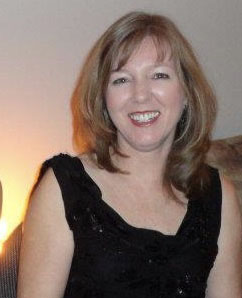
Maureen has over 20 years’ experience in the health information management field. After a number of years working across all general health information areas, she specialized in trauma; developing a hospital trauma registry program – collecting, analyzing, and reporting trauma data, assisting and coordinating trauma research and performance improvement. She has also led hospital teams through the Trauma Association of Canada accreditation process.
Maureen’s journey to AAAM started when “attending an AIS class and was asked if I was interested in becoming a faculty member. I was part of the initial cohort that was trained in 1998. I have been teaching ever since and really enjoy it. Our teaching methods and content have come a long way since then (use of transparencies back in the late 90’s). I have been involved in all of the updates to the training program and field testing new versions.” She has been an integral part of the AIS program, teaching in person and online. She assisted with the development of the online training program. Her vast experience has been an asset to AAAM, “I’ve had the opportunity to work with the AAAM team to develop the mapping ICD to AIS projects, as well as, develop the online training course many years ago and contributed to the updates.”
With her versatile contributions to the industry, Maureen reflects on one of the highlights of her career – “spearheading cutting-edge technologies in health care with T6 Health Systems. Being a part of the development of this new platform that collects real-time data at the point of care supporting data collection, clinical decision support, and predictive analytics to improve performance along the continuum of care of trauma and complex acute care has been very exciting. We’re also able to include scores such as the ISS as the injury findings are being documented by the clinicians.”
As an AIS instructor, Maureen advises, “networking is key to this industry – be visible. Networking not through social media but in person. Learning what others are doing in the industry and how to improve. Understand the data you’re working with and keep yourself up-to-date on what coding systems are out there.” Some changes that we can make as a community include the “need to get smarter at how we do things and use technology more. If we want data to make a difference, we need better real-time data all while eliminating unnecessary steps. Health Care is way behind when it comes to technology but that is slowly changing.”
Maureen has co-authored numerous trauma and injury related articles, co-authored the Injury Surveillance and Trauma Registry Information Management Orientation Manual and served as a peer reviewer for the Journal “Injury”. She was fortunate enough to be chair of some provincial, as well as, national trauma committees and led the creation of the Trauma Registry Information Specialists of Canada (TRISC), a subgroup of the Trauma Association of Canada (TAC). Maureen has transitioned over the past few years from the health sector to the private sector. “Although somewhat scary and very different, it has been very rewarding to be at the forefront of emerging technologies in our field.”
